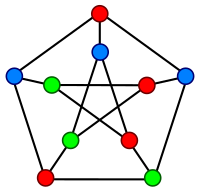
Photo from wikipedia
Background The rapid advancement of sequencing technologies has made it possible to regularly produce millions of high-quality reads from the DNA samples in the sequencing laboratories. To this end, the… Click to show full abstract
Background The rapid advancement of sequencing technologies has made it possible to regularly produce millions of high-quality reads from the DNA samples in the sequencing laboratories. To this end, the de Bruijn graph is a popular data structure in the genome assembly literature for efficient representation and processing of data. Due to the number of nodes in a de Bruijn graph, the main barrier here is the memory and runtime. Therefore, this area has received significant attention in contemporary literature. Results In this paper, we present an approach called HaVec that attempts to achieve a balance between the memory consumption and the running time. HaVec uses a hash table along with an auxiliary vector data structure to store the de Bruijn graph thereby improving the total memory usage and the running time. A critical and noteworthy feature of HaVec is that it exhibits no false positive error. Conclusions In general, the graph construction procedure takes the major share of the time involved in an assembly process. HaVec can be seen as a significant advancement in this aspect. We anticipate that HaVec will be extremely useful in the de Bruijn graph-based genome assembly.
Journal Title: International Journal of Genomics
Year Published: 2017
Link to full text (if available)
Share on Social Media: Sign Up to like & get
recommendations!